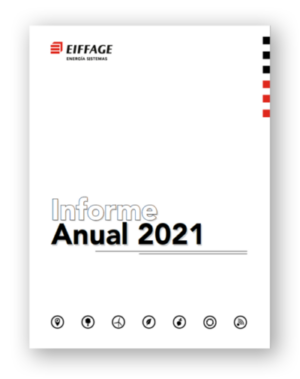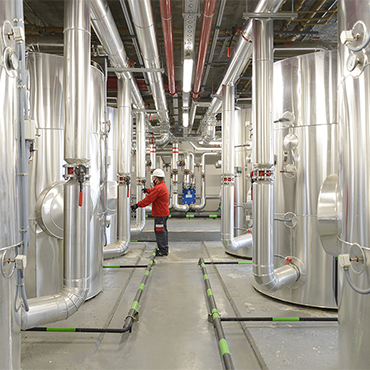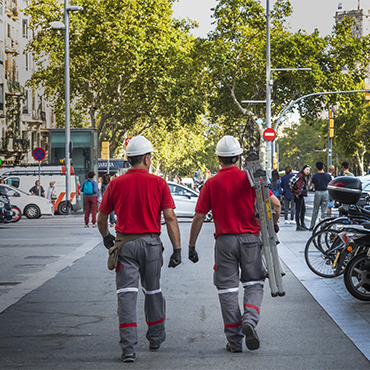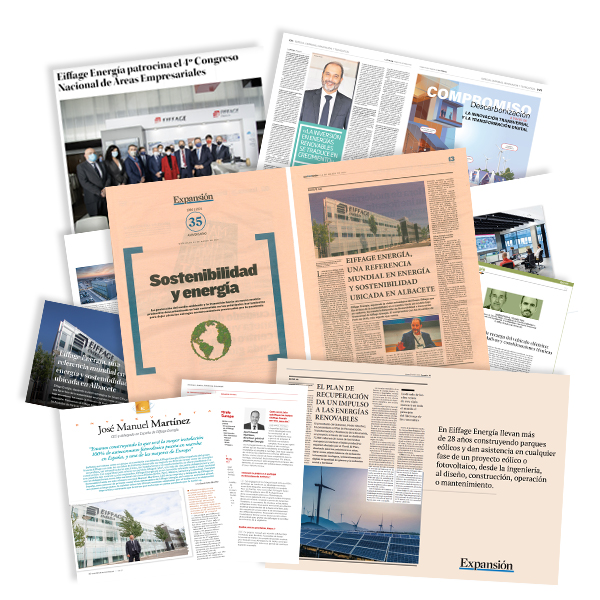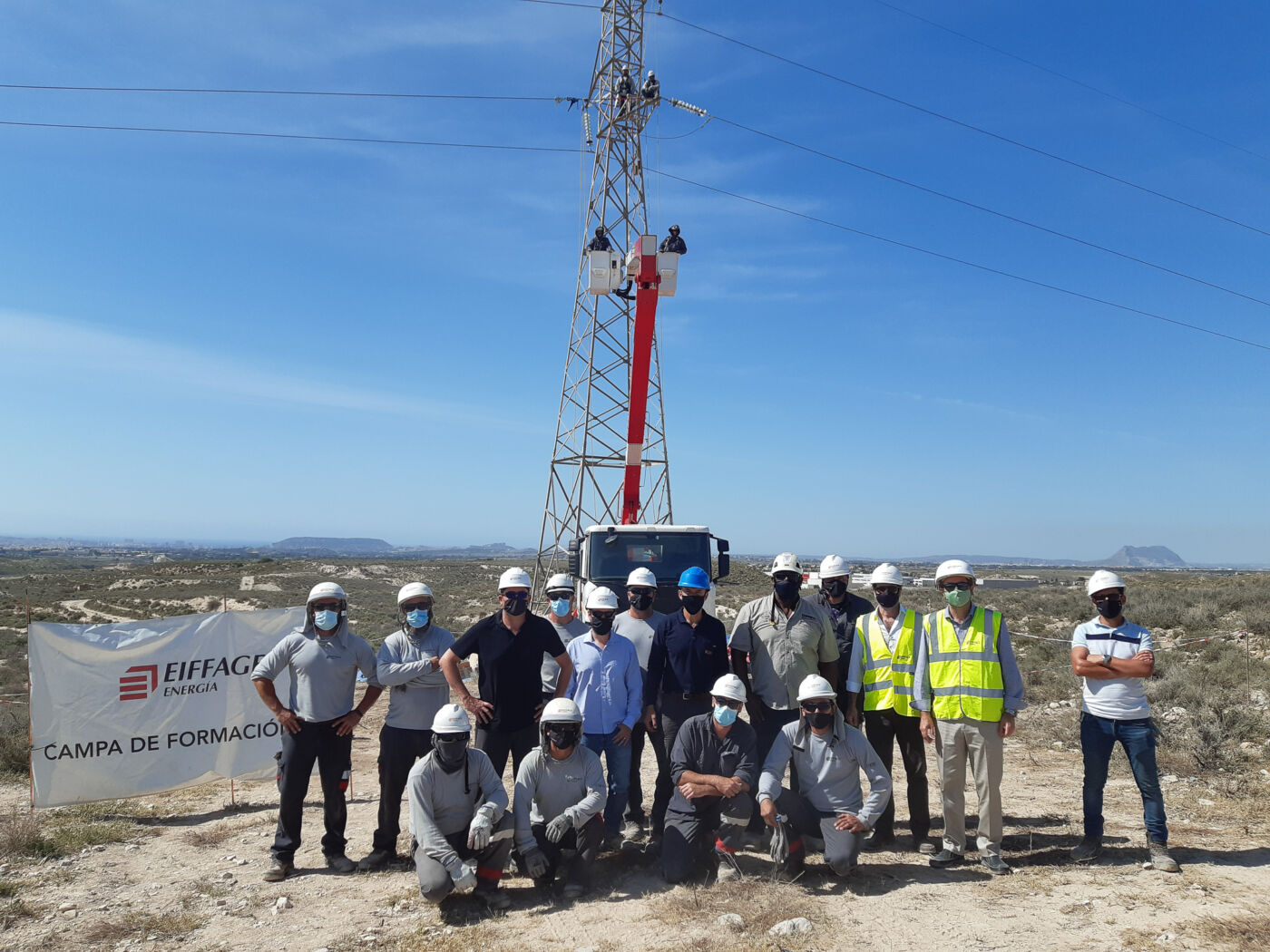Potential Method. The territorial delegation of the Levante Zone of Eiffage Energía, in coordination with the Technical Commission of High Voltage Live Working, has developed in Alicante a course of High Voltage Live Working using the Potential Method. Until now, the Company had only specialized in High Voltage Work using the Contact Method (insulating gloves) and Distance (insulating poles). This new training, which had not been done previously at Eiffage Energía, is through the pending Live-Work method to complete all ranges of maintenance work in Live Work. Through the Potential method, the worker comes into contact with the cable voltage of the line itself with a conductive suit (Faraday Cage). The course, which lasted three weeks, was held on a line provided by Iberdrola for practical training in Mutxamel (Alicante). It has been organised by Kolab trials (Kobbeco Group) and given by Hermon Hardy, from Chance (Hubbell Power Systems), a worldwide instructor with over 33 years’ experience in this type of work. A total of 16 operators from different parts of Eiffage Energía participated: East, Central and North. During training, our territorial director for the Levante area, Miguel Jorro, accompanied by Iberdrola’s area manager in Alicante, César Calomarde, visited the students while they were doing their practical training. We were also visited by members of Iberdrola’s Technical Commission for Live Work.
Potential Method
Through this method, the worker comes into electrical contact with the live element of the installation in which he is working, placing himself at the same potential. Worker protection against electrical hazards is ensured by:
- The maintenance of minimum safety distances of the worker with respect to elements at different potential.
- The use of an insulating approach element, with which the worker is isolated from the earth potential.
- With a full conductive suit (Faraday protection) to shield the electric field.
In this way, the worker directly handles the conductors or live elements. For this, it is necessary that the worker be placed at the same potential as the element of the installation where he is working. In these conditions, his insulation with respect to earth and to the other phases of the installation must be ensured by means of insulating elements suitable for the existing potential differences. This work method requires a high degree of specialisation and the use of adequate means and specially trained workers.
Safety distances
The most critical moment occurs when the worker approaches the live point through an insulating element. Safety distances must be complied with. Adequate planning and a correct working procedure are essential. A vital aspect of this work method is the isolation of the worker from earthing and other phases. Elements that help the worker to get closer to the point of work (insulating ladders, hoisting devices, etc.) must provide adequate insulation for the existing voltage level. Before starting work, the leakage current flowing through the element on which the worker’s insulation depends must be checked. This can be done using a microammeter monitored by a worker or by installing an automatic alarm device. When the worker accesses the live element, the minimum working distances established in the Royal Decree (DPEL) must be respected. In practice, to guarantee such distances, it may be necessary to work with a margin or safety factor to be studied for each type of work, depending on the risk assessment.
Conductive outerwear
Operators working “at potential” must be dressed in conductive outerwear (trousers, jacket, hood, gloves and footwear). This clothing constitutes a Faraday-type shield, which prevents the electric field penetrating their body. Before the worker touches the live element, he/she must electrically bond with it in order to put him/herself at the same potential. This is done by connecting the auxiliary conductor to the other end of the conductive suit worn by the worker. This conductor must remain connected to the live element for the entire duration of the work. 











